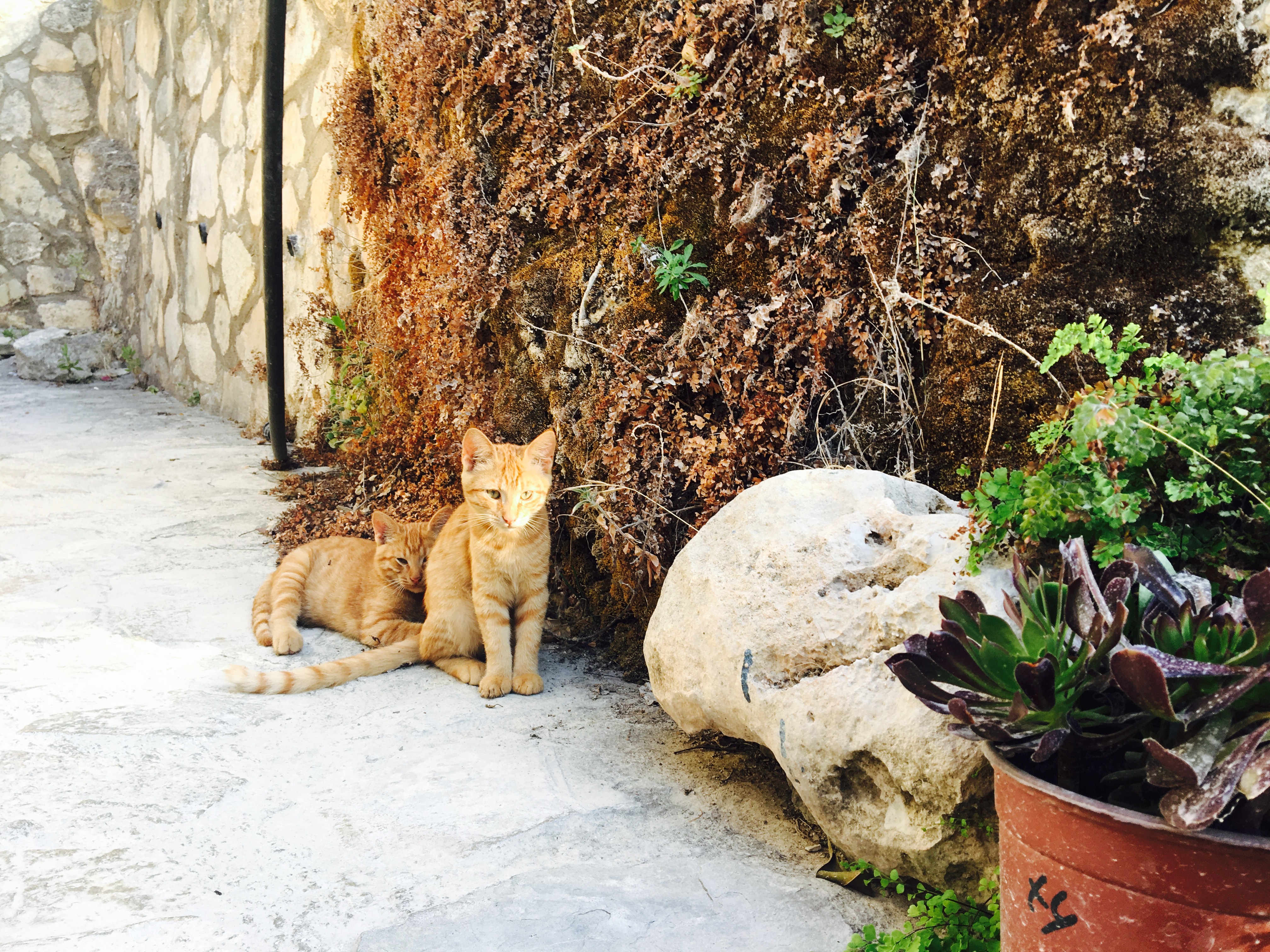Teaching Your Kitten to Use a Scratching Post

Table of Contents
Understanding Your Cat's Natural Needs
When I first brought home my cat Whiskers, I was determined to protect my furniture from his claws. I tried everything from deterrent sprays to double-sided tape, but nothing worked until I understood that scratching is a natural, instinctive behavior that serves important purposes for cats. Once I provided appropriate outlets, the furniture destruction stopped almost immediately.
Why Cats Need to Scratch
Scratching is much more than just a destructive habit - it's a complex behavior that serves multiple important purposes for your cat's physical and mental well-being.
Physical Benefits
I learned that scratching provides several physical benefits for cats:
- Removes dead outer layers of claws, keeping them healthy
- Stretches and exercises back and shoulder muscles
- Provides a full-body stretch that feels good
- Maintains claw health and sharpness for hunting and climbing
Behavioral Benefits
Scratching also serves important behavioral functions:
- Marks territory with visual and scent signals
- Relieves stress and anxiety
- Provides mental stimulation and satisfaction
- Establishes routine and comfort in their environment
Choosing the Right Scratching Post
After trying several different scratching posts with Whiskers, I learned that the right choice makes all the difference. Here's what I discovered:
Size and Stability
I chose a scratching post that was tall enough for Whiskers to fully stretch (at least 30 inches) and stable enough that it wouldn't tip over during use. A wobbly post can frighten your cat and discourage use. I learned this the hard way with a cheap post that toppled over the first time Whiskers used it.
Material Preferences
Most cats prefer sisal rope or cardboard, but some may like carpet or wood. I offered different materials to see what Whiskers preferred. I avoided carpet that matched my furniture, as this can confuse your cat about what's acceptable to scratch.
Orientation Options
I discovered that cats have different preferences for scratching orientation:
- Vertical posts: Most popular, allows full stretching
- Horizontal scratchers: Good for cats who prefer to scratch while lying down
- Angled scratchers: Compromise between vertical and horizontal
Strategic Placement
I placed scratching posts in areas where Whiskers naturally wanted to scratch, such as near sleeping areas, by windows, or in high-traffic areas. I avoided hiding them in corners or unused rooms where they're less likely to be used. The key was making the scratching post more appealing than the furniture.
My Step-by-Step Training Process
Here's the approach that worked successfully with Whiskers:
Week 1: Introduction and Familiarization
I placed the scratching post in Whiskers' preferred area and let him explore it naturally. I didn't force interaction - I let him investigate at his own pace. I also rubbed catnip on the post to make it more appealing.
Week 2: Positive Association
When I saw Whiskers showing interest in the post, I rewarded him with treats and praise. I also incorporated the scratching post into our play sessions by dangling toys near it.
Week 3: Redirection Training
When I caught Whiskers scratching inappropriate items, I gently redirected him to the scratching post. I used treats and praise when he used the post correctly, making it clear that this was the preferred behavior.
Week 4: Reinforcement and Maintenance
I continued rewarding good behavior and redirecting inappropriate scratching. By this point, Whiskers understood that the scratching post was the appropriate place to scratch.
Making the Post Appealing
I learned several techniques to make the scratching post more attractive to Whiskers:
Catnip and Attractants
I sprinkled catnip on the scratching post to make it more attractive. I also used commercial cat attractants and even Whiskers' favorite treats to encourage use.
Play Integration
I incorporated the scratching post into play sessions by dangling toys near it or encouraging Whiskers to chase toys up and down the post. This made the post part of our fun activities together.
Protecting Your Furniture
While training Whiskers to use the scratching post, I also protected my furniture:
Deterrent Methods
I used several deterrent methods on furniture:
- Double-sided tape on furniture edges
- Aluminum foil on surfaces
- Commercial deterrent sprays
- Furniture covers or protectors
Positive Alternatives
I provided multiple scratching options throughout my home, especially near furniture Whiskers liked to scratch. This gave him appropriate alternatives close to his preferred locations.
Common Training Mistakes
I made several mistakes during Whiskers' training that I'd like to help you avoid:
- Moving the scratching post too frequently
- Punishing Whiskers for inappropriate scratching
- Not providing enough scratching options
- Choosing the wrong material or size
- Placing posts in unappealing locations
Maintaining the Scratching Post
I keep Whiskers' scratching post in good condition by:
- Regularly cleaning and replacing worn materials
- Ensuring stability and safety
- Rotating or refreshing catnip regularly
- Monitoring for damage or wear
Multiple Cat Households
In multi-cat homes, I provide enough scratching posts for all cats (one per cat, plus one extra). I place them in different areas to prevent territorial disputes and ensure each cat has access to appropriate scratching surfaces.
When Training Isn't Working
If your cat continues to scratch inappropriate items despite training efforts, try:
- Different materials or orientations
- Moving the post to a different location
- Consulting with a veterinarian about potential medical issues
- Working with a professional animal behaviorist
Frequently Asked Questions
How long does it take to train a cat to use a scratching post?
Most cats learn within 2-4 weeks with consistent training. Some may take longer, especially if they've been scratching furniture for a long time. Whiskers learned within 3 weeks.
What if my cat ignores the scratching post?
Try different materials, locations, or orientations. Some cats prefer horizontal scratchers, while others like vertical posts. Experiment to find what works for your cat.
Should I declaw my cat instead?
Declawing is not recommended as it's a painful procedure that removes the last bone of each toe. Proper scratching post training is a much better solution that respects your cat's natural needs.
Final Thoughts
Training your cat to use a scratching post is about working with their natural instincts rather than against them. With the right approach, patience, and consistency, you can protect your furniture while keeping your cat happy and healthy. The key is understanding that scratching is a natural behavior that serves important purposes for your cat's well-being.
## Related Reading If you found this article helpful, you might also enjoy: • [Complete Guide to Litter Training Your Kitten Guide to Litter Training Your Kitten](/blog/the-complete-guide-to-litter-training-your-kitten) - Litter training is one of the most important skills you can teach your kitten. Learn the step-by-step process to ensure success from day one. • [Teaching Your Kitten to Come When Called Kitten to Come When Called](/blog/teaching-your-kitten-to-come-when-called) - Teaching your kitten to come when called is essential for safety and bonding. Learn effective techniques that work. These articles explore similar themes and can help deepen your understanding of the topic. ## Related Reading For more insights on this topic, check out our article on [Socializing Your Kitten: The Critical Window](/blog/socializing-your-kitten-the-critical-window).


Comments (0)
Want to leave a comment?
Please Login or Register to join the conversation.